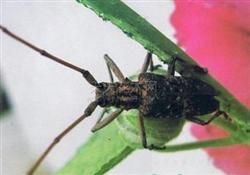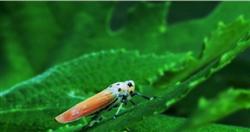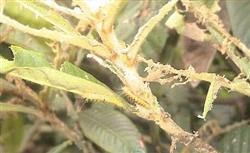Treatment of "empty bosom" of mango

We often see: mango trees grow too vigorously, there will be low yield or non-fruiting phenomenon. This is because vegetative growth is dominant and reproductive growth is at a disadvantage. In view of this situation, effective measures should be taken to solve the problem of non-fruiting or less fruiting (that is, "empty") of mango trees. According to the experience of fruit farmers in Maoming, the following three effective measures can be adopted: 1. Carry out ring cutting. During the growth process, the main branch or secondary main branch of the sterile mango tree is cut one to one circle, deep to the junction of phloem and xylem, so it is not suitable to damage the xylem. In this way, the nutrients produced by the leaves are no longer transported down, but are all accumulated at the upper end of the incision, so that the branches have sufficient starch, protein and fat to promote flower bud differentiation. The combination of water and fertilizer production and deep digging side ditches to lower the groundwater level is one of the good measures. two。 To cut off the roots. The purpose of root cutting is to reduce the absorption of water and nutrients by roots and promote reproductive growth. The specific method is to combine deep turning to improve the soil in winter, dig a ring groove about 60 cm deep and 30 cm wide under the vertical line of the crown, cut off the thick roots of the lower soil, sun for five or six days, and then apply rotten organic fertilizer and cover it with topsoil. At the same time, the soil was ploughed 20 cm deep in winter to cut off the absorption root of the topsoil, weaken the transport of water and nutrients from the underground part to the aboveground part, and increase the sap concentration of the tree body, which was beneficial to the accumulation of nutrients in the aboveground part and the promotion of flower bud differentiation. 3. Grab the pruning. It is found out that the reason why most mango trees do not bear fruit is that they are easy to pull out secondary or tertiary shoots, late autumn shoots and winter shoots, and the crown branches are disordered, the internal ventilation is poor, and some of the results move outward. In view of this situation, pruning should be done well, thin and weak branches and dead branches should be cut off, and some strong shoots and some drooping branches, overlapping branches and shade branches should be removed properly, which has a good effect on the reasonable distribution of tree branches and sufficient sunshine, increase the accumulation of nutrients in effective branches, benefit flower bud differentiation and improve fruit setting rate.
- Prev

Orchard disease of mango: bituminous coal disease
Mango flat-beaked leafhopper is also called leaf hopper to damage flower ear and young fruit, resulting in falling flowers and fruit, poor harvest or even loss of harvest, and serious soot disease, but also damage young buds, tender shoots and leaves, causing buds and leaf deformities. It usually occurs more often in the flowering stage, the humidity is high, and the closure of the crown is more likely to cause the worm. Often in Hainan.
- Next

Timely control of loquat yellow caterpillar
Loquat yellow caterpillar adults are commonly known as "inverted butterflies". The larvae eat buds and tender leaves, and when rampant, they also endanger old leaves, tender stem barks, flowers and fruits, and only upper epidermis and veins remain in the injured leaves. The first instar larvae of the insect are clustered. The second year old began to disperse the harm, and the food intake increased greatly after the third year old. This insect is the most common and serious kind of loquat.
Related
- Moge, come on! The staff of the peasant association in the producing area of cantaloupe were frightened when the crowd gathered.
- Causes and Solutions of low Fruit setting rate of Apple
- Symptoms and control measures of passion fruit virus disease
- Fruit growing lesson: how do apple orchards keep high yields?
- Can you build orchards in the mountains? What are the pros and cons?
- How to manage the coloring period of Crisson grape?
- This paper introduces the processing technology of two kinds of fig products.
- How much is a month for retired teachers in rural areas by 2020?
- How can strawberry planting increase sugar content? We should pay attention to management in many aspects.
- What are the cultivation techniques on how to improve the yield of golden fruit?

